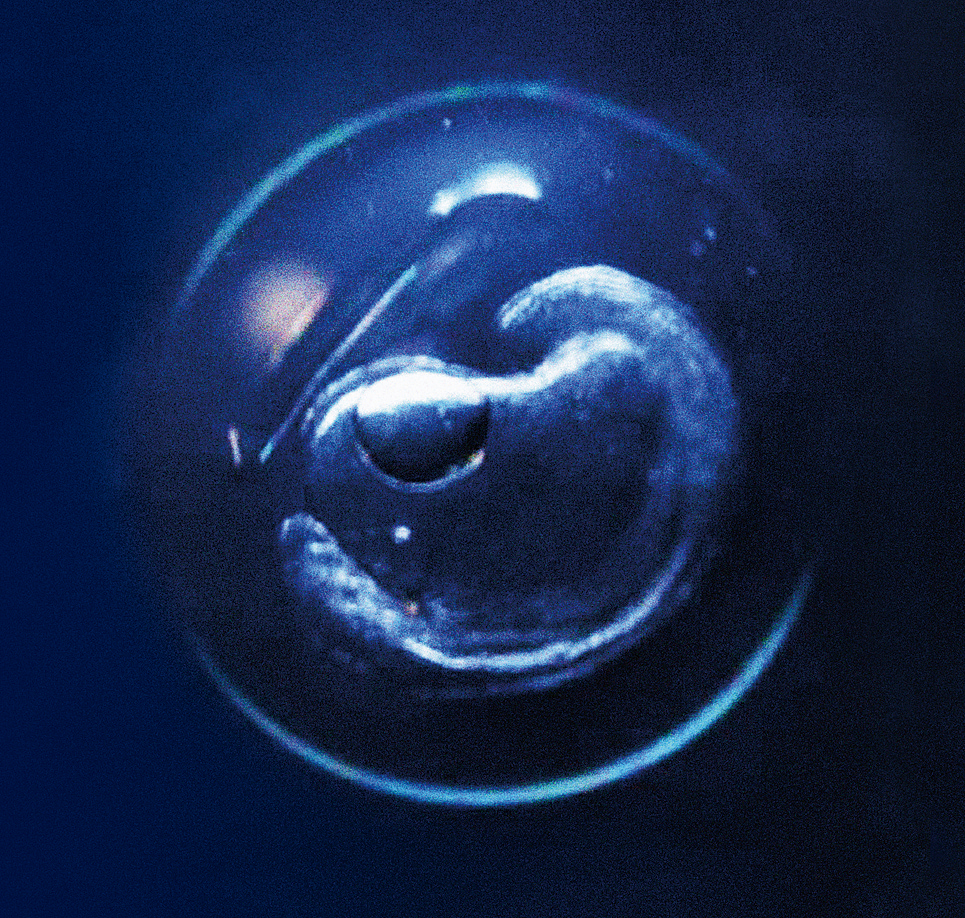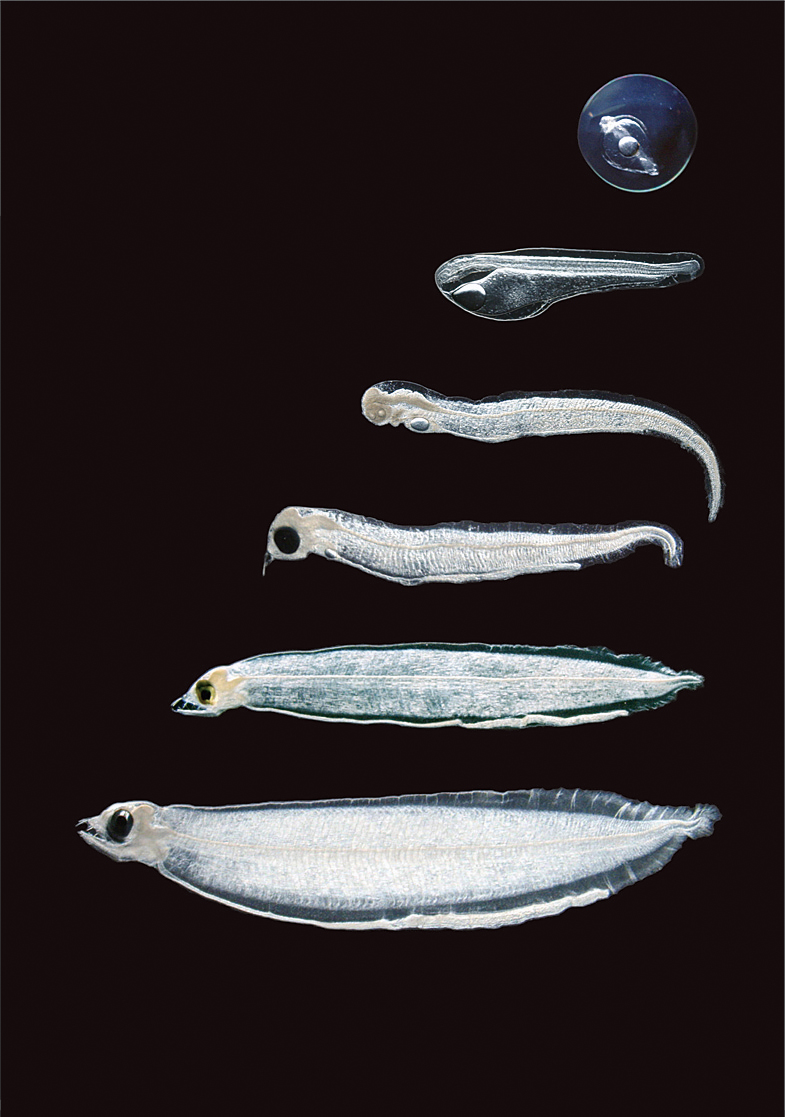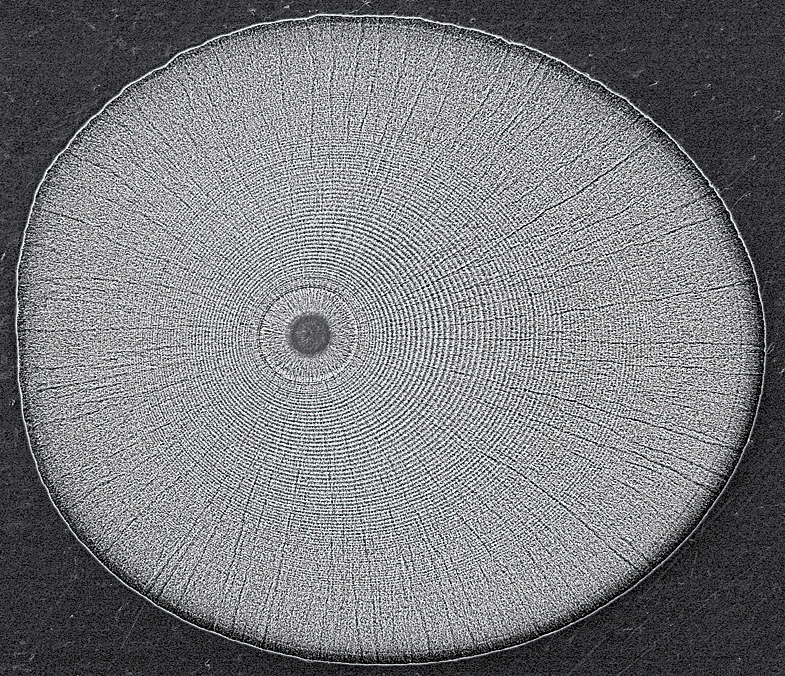B15
Egg and leptocephalus of Japanese eel Anguilla japonica
Eels are migratory fish that spend their juvenile stages in freshwater and their larval and adult stages in the ocean. The spawning sites of eels have been a long-standing mystery. Their life history starts from an egg, then they become laterally compressed transparent larvae called leptocephali, which metamorphose into juveniles and then finally mature as adults. Juvenile eels can be found in estuaries as well as all the way into the upper reaches of rivers and lakes, and they grow for about ten years. For spawning, eels travel downstream and into the sea. Surveys in search of the spawning area of the Japanese eel Anguilla japonica started in 1973 in Japan. After long-term efforts, eggs were finally found offshore in the ocean west of the Mariana Islands in 2009. Sites of the spawning behavior of other eel species still remain totally unknown. (Mari Kuroki)
References
黒木真理・塚本勝巳(2011)『旅するウナギ−1億年の時空をこえて』東海大学出版会。
Tanaka, S. (1975) Collection of leptocephali of Okinawa Islands. Bulletin of the Japanese Society for the Science of Fish 41: 129–136.
Tsukamoto, K. (1992) Discovery of the spawning area for the Japanese eel. Nature 356: 789–791.



